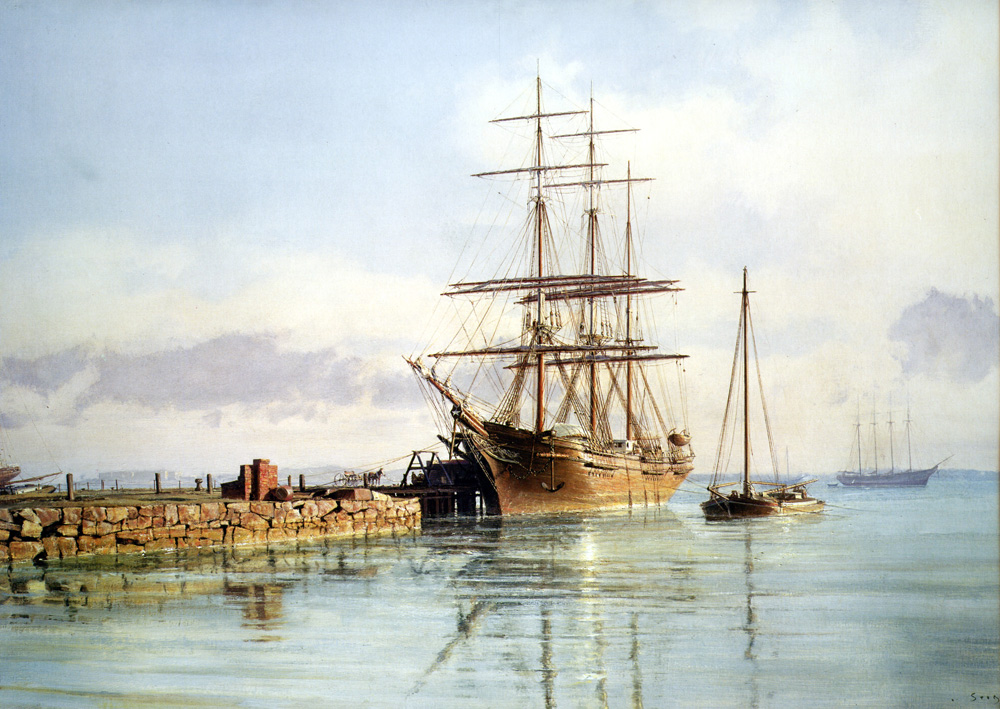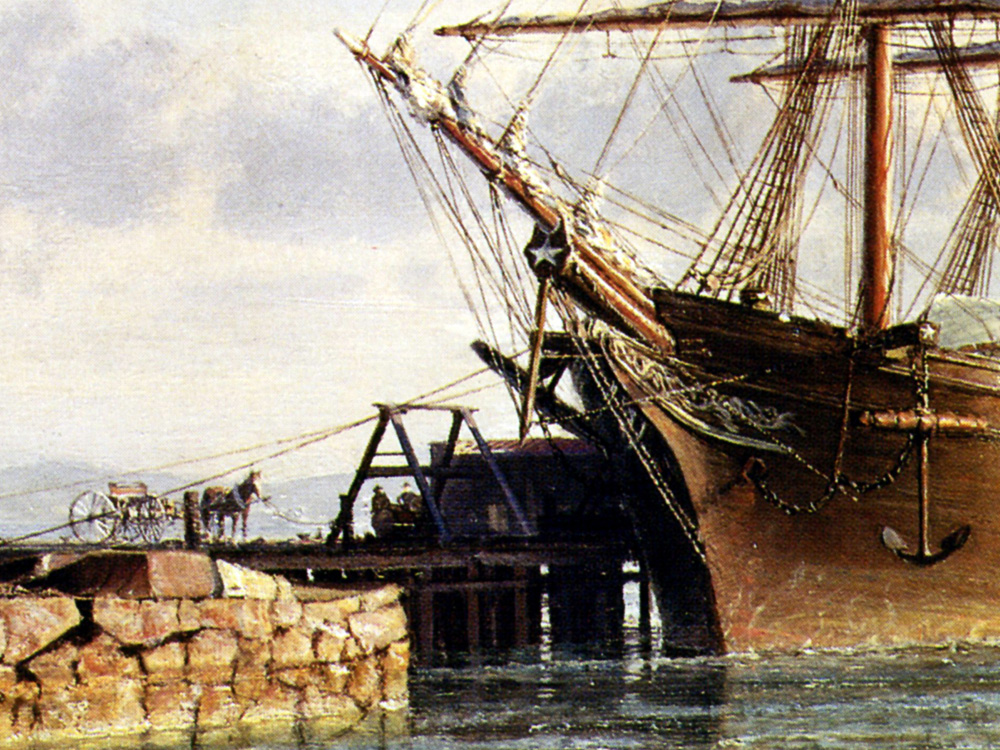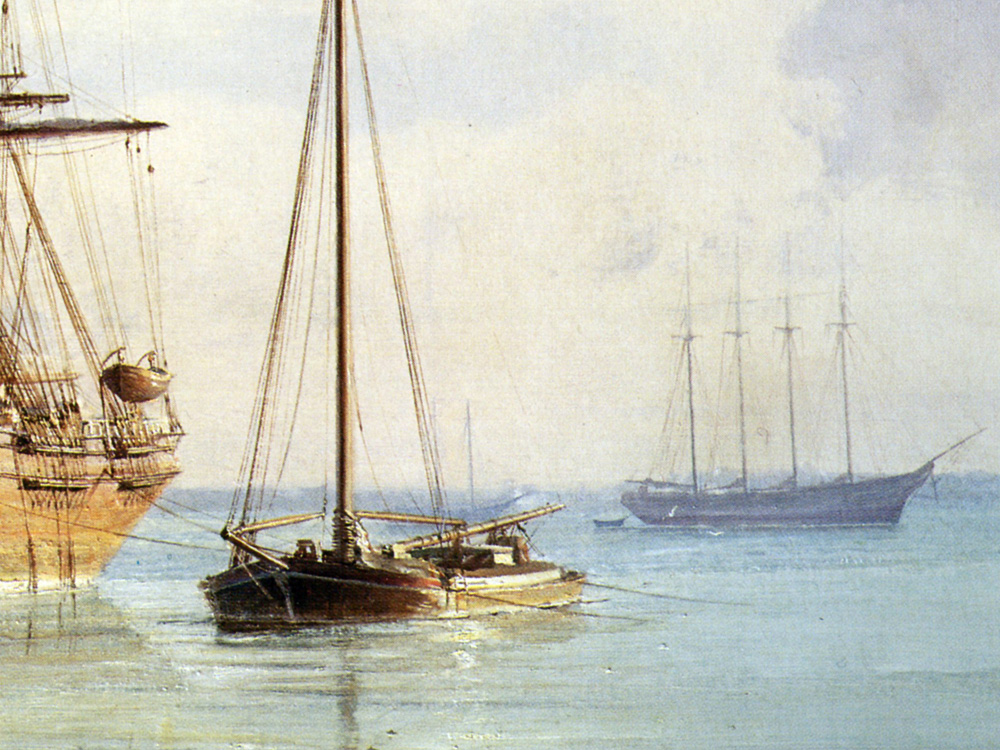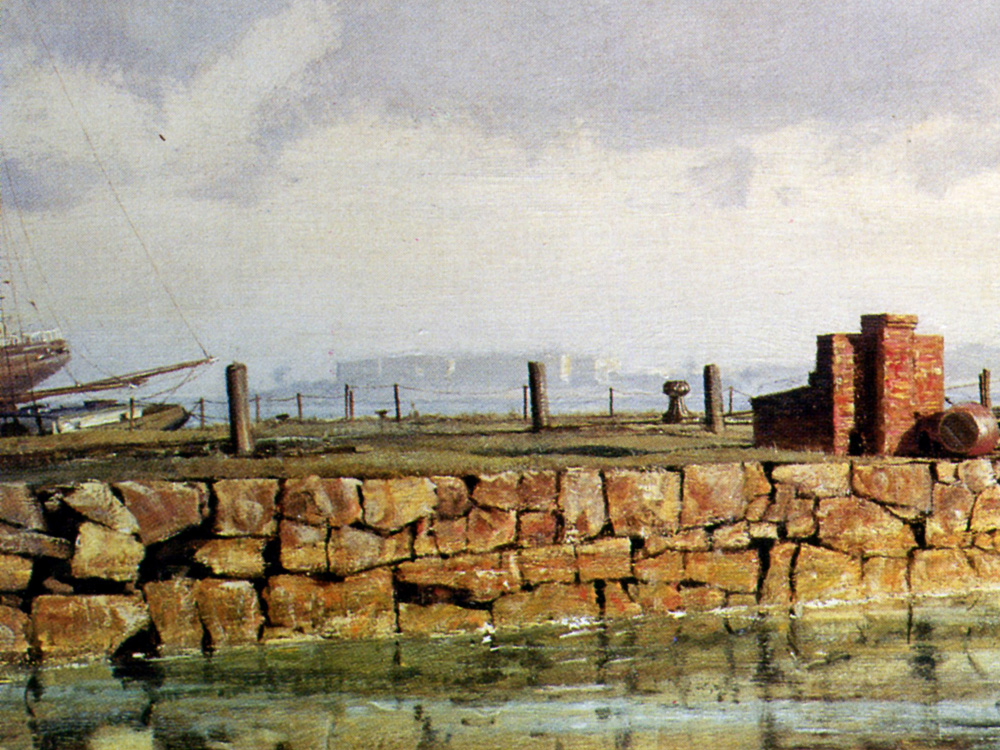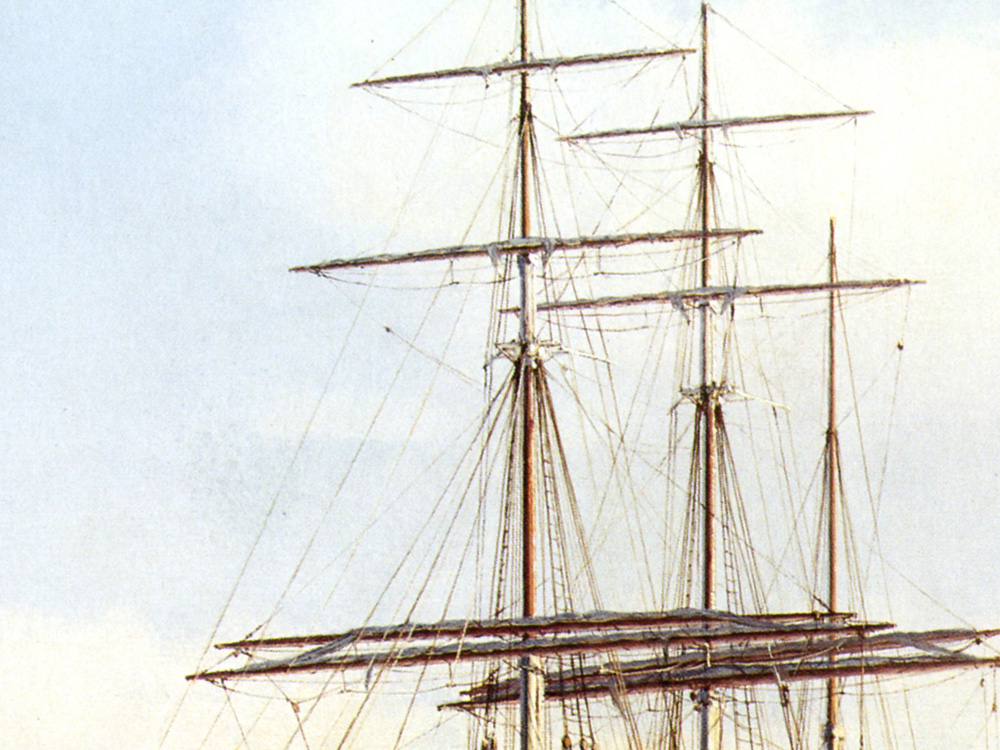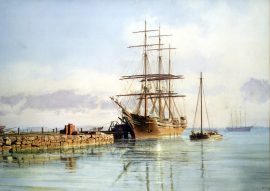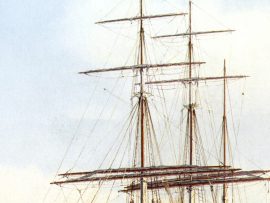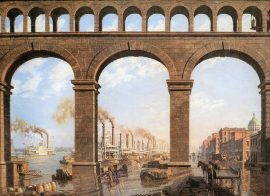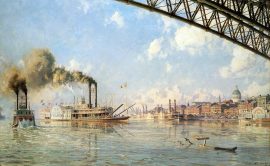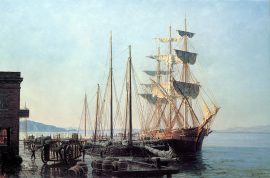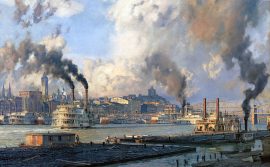Boston: The Bark “W.B. Flint” at an East Boston Wharf
$800.00 Original price was: $800.00.$720.00Current price is: $720.00.
After the crack clippers made their final runs, and the steamers on the North Atlantic service were moving in and out of New York, the last of American sail could be seen in Massachusetts Bay. As late as 1925, the T Wharf in Boston still supported a diminishing fleet of sail-driven fishermen. Coastal arrivals, represented by vessels such as the W. B. Flint, were common in Boston during the closing years of the nineteenth century. An eight-hundred tonner, the Flint was the forerunner of the Canadian Pacific Railroad’s entry into steam navigation.
I had two objectives for this painting: to show the problems of coastal trading; and to portray the peaceful atmosphere of a quiet afternoon as the low light sparkled off the Flint’s topsides, laying reflections into the water. One of the several ailments of coastal trading by sail is revealed in the painting: the problem of fetching a back-haul cargo.
The Flint is in ballast, riding high in the water after discharging her cargo from Canadian Pacific. Now she waits for a northbound consignment: it would be unprofitable for the railroad to collect revenue on only one leg of the voyage. The granite sloop anchored off the port side of the Flint has arrived with quarry stone, probably from Cape Ann, destined for a building site to the north. But the Flint might wait a week as the cargo brokers sought anything that was moving up the coast.
The same is true for the four-masted coasting schooner anchored offshore. She will remain on her hook, not paying wharfage until cargo is found; then she will proceed to the dock, but the chances for a topped cargo are dim. Most likely, this vessel has arrived in Boston with a load of lumber from Maine, which will be carried inland by rail to other markets. But very few cargoes moved out of Boston northward, and that part of the coastal trade was unbalanced: too much cargo one way and not enough the other.
The irony of this painting, in my opinion, is the position of this wharf in East Boston; according to old maps that I have studied, the rock pier sits in exactly the same spot as the terminal complex at Boston’s Logan Airport. That airport and its air freight service tended to diminish Boston shipping; one of the major exports from the port city these days is technology, high value-low volume cargo, and on that basis, no watercraft can compete with the jet.
| Weight | 6.00 lbs |
|---|---|
| Catalog: | Stobart-018 |
| Artist: | John Stobart |
| Dimensions: | 19" x 29 1/2" |
| Edition: | 750 |

